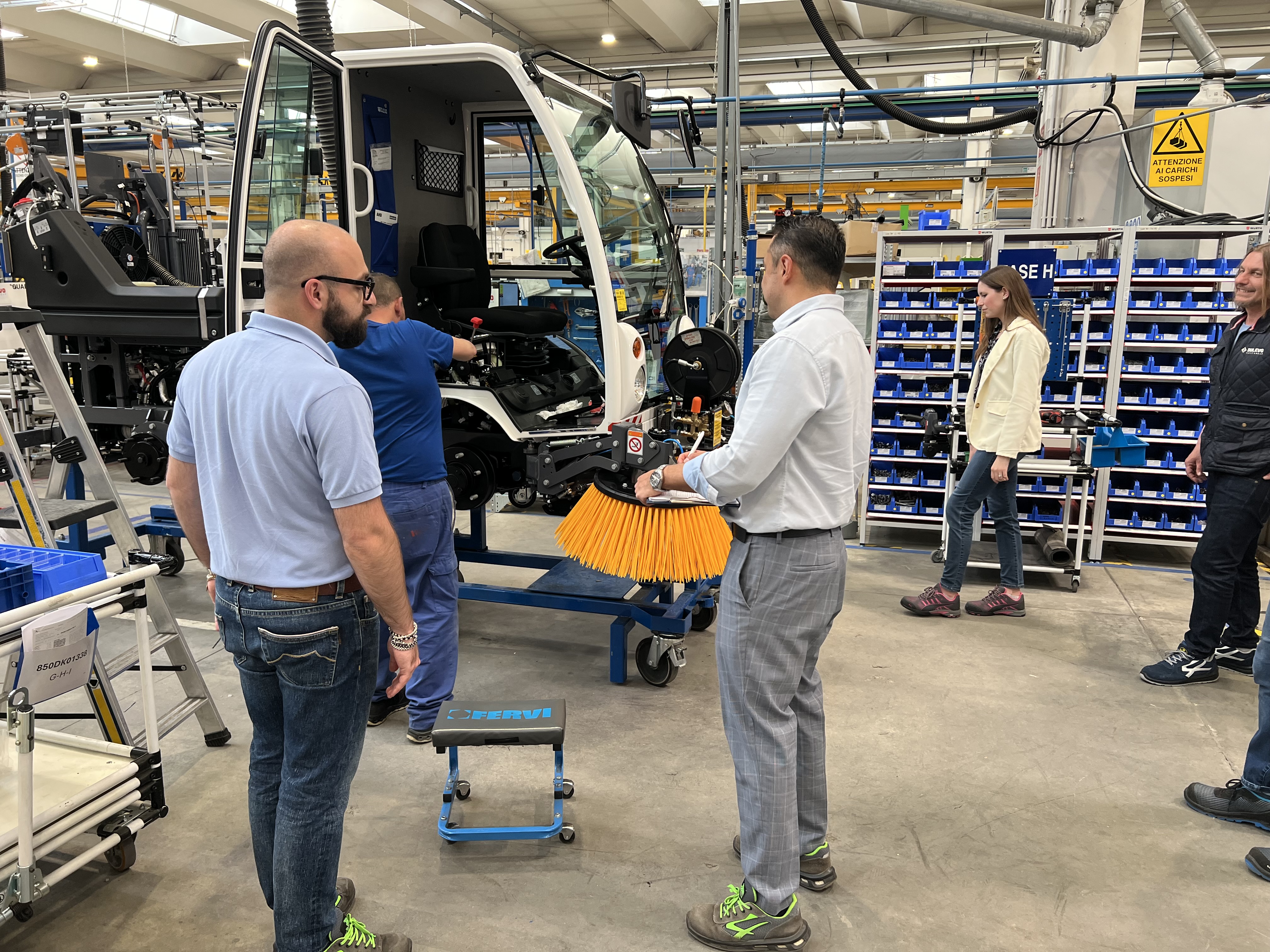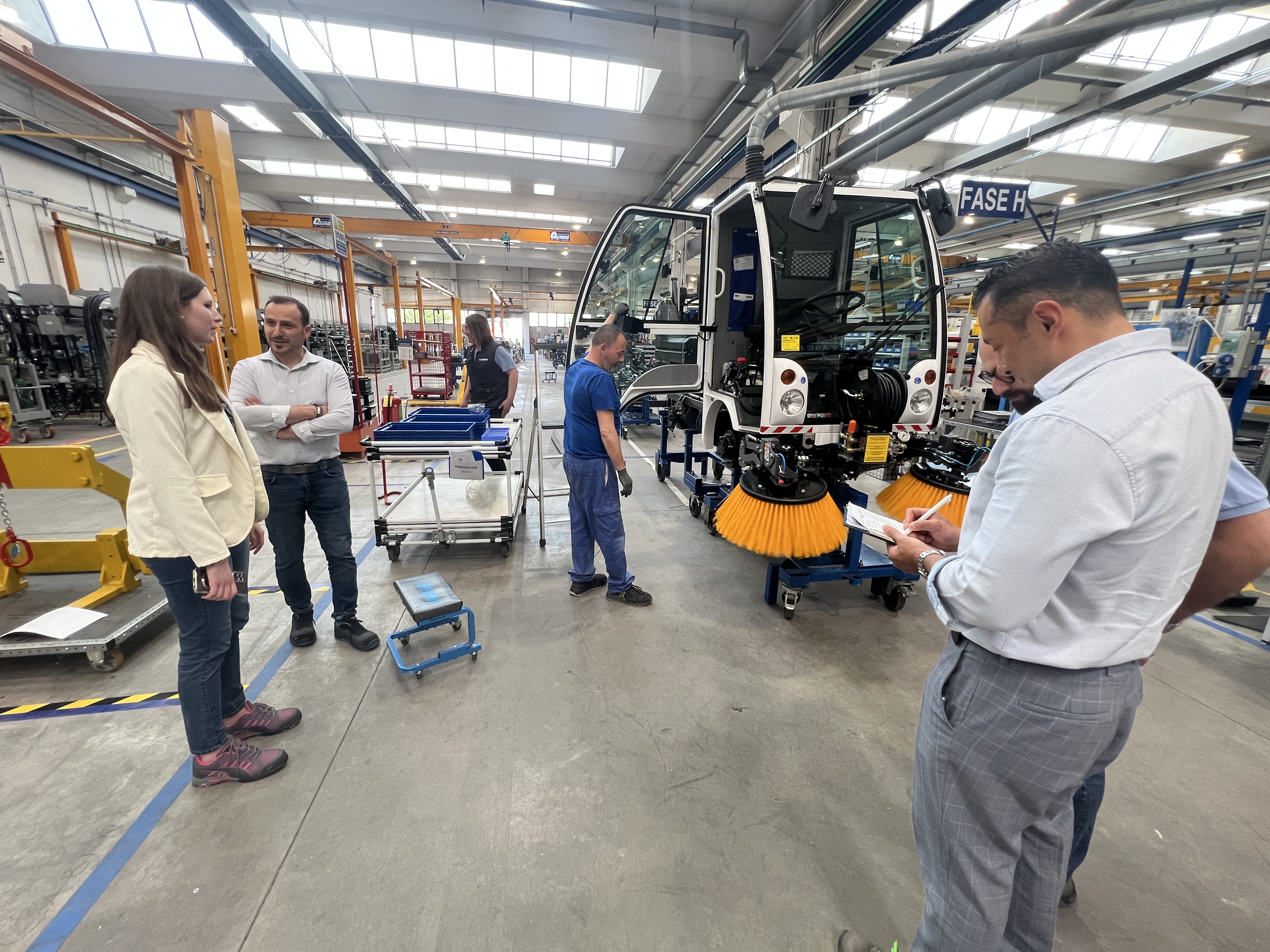Engaging people to improve safety
At Dulevo, safety is not just a question of compliance, but a core value that actively involves those who work in production every day. A concrete example of this approach is the ‘’Safety Interview‘’ project, born from the willingness to directly involve production operators in the planning of their work activities.
‘The objective of the activity is to make the workstation a pleasant, safe and ergonomic place,’ explains Alfredo Salazar, HSE Specialist at Dulevo. ‘We decided to go beyond the traditional approach based on checklists and documentation, to introduce a more dynamic system, based on structured interviews and direct observation.’
A three-stage analysis
The safety interview consists of three basic phases:
1. Initial observation of the workstation - An auditor fills out an initial form with five questions relating to various aspects of safety, such as the organisation of the workspace, the ergonomics of the workstation, the correct use of personal protective equipment (PPE) and the presence of any equipment or behavioural hazards.
2. Direct questions to the operator - The auditor asks the operator five questions to assess his or her ‘safety knowledge level’, i.e. how aware he or she is of safety rules and good practices in the daily work.
3. Direct observation of the work - For at least one hour, the auditors follow the progress of activities in production, analysing how equipment is used and checking for possible hazards. During this phase, they can ask questions to clarify doubts or investigate specific aspects.
A team of auditors with different perspectives
One of the most innovative aspects of this project is the composition of the auditor team. ‘We wanted to involve not only HSE personnel, but also two people not directly connected to the production line,’ Salazar explains. ‘This is because people who work at the same workstation every day tend to take certain situations for granted. An outside look, on the other hand, can bring out aspects that would otherwise go unnoticed.’
The auditor with experience in security has a clinical eye and already knows many of the answers, while staff from other departments develop a natural curiosity and find themselves questioning even elements that might seem obvious. This mix of skills has resulted in a more detailed and objective analysis.
An impact that goes beyond safety
In addition to improving safety, the interviews also brought to light useful suggestions for the organisation of work. ‘We found that many operators, when answering questions, spontaneously shared ideas for optimising workflows or improving the operating environment,’ Salazar says. ‘This activity turned into a real listening and continuous improvement tool.’
Most of the suggestions collected from auditors and operators led to the analysis and improvement of certain assembly procedures, or to the creation of specific equipment to facilitate work and increase efficiency, as we will tell you in a dedicated in-depth article.
The next steps
As of today, the project has covered 35% of the green line and 25% of the grey and blue lines, while the yellow and orange lines have yet to be started. The aim is to proceed with two interviews per month in order not to overload the staff and to ensure constant monitoring.
‘Working on safety is not just about complying with regulations, but creating an environment where everyone feels involved and responsible,’ Salazar concludes. ‘And this initiative shows that, when we work together, we can achieve truly significant results.’










